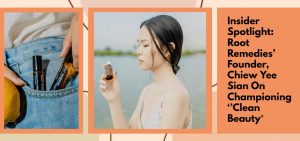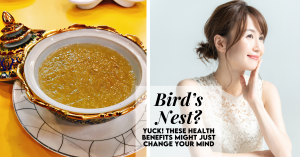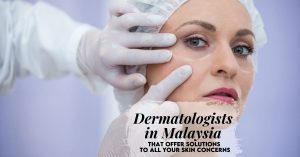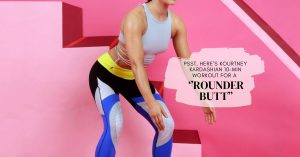Skin
Every Type Of Acne & Your Guide To How To Deal With Them!
Acne is something many of us go through. From the moment you hit puberty, and for some, it lasts till...
By: Cherelle Lim / August 11, 2021
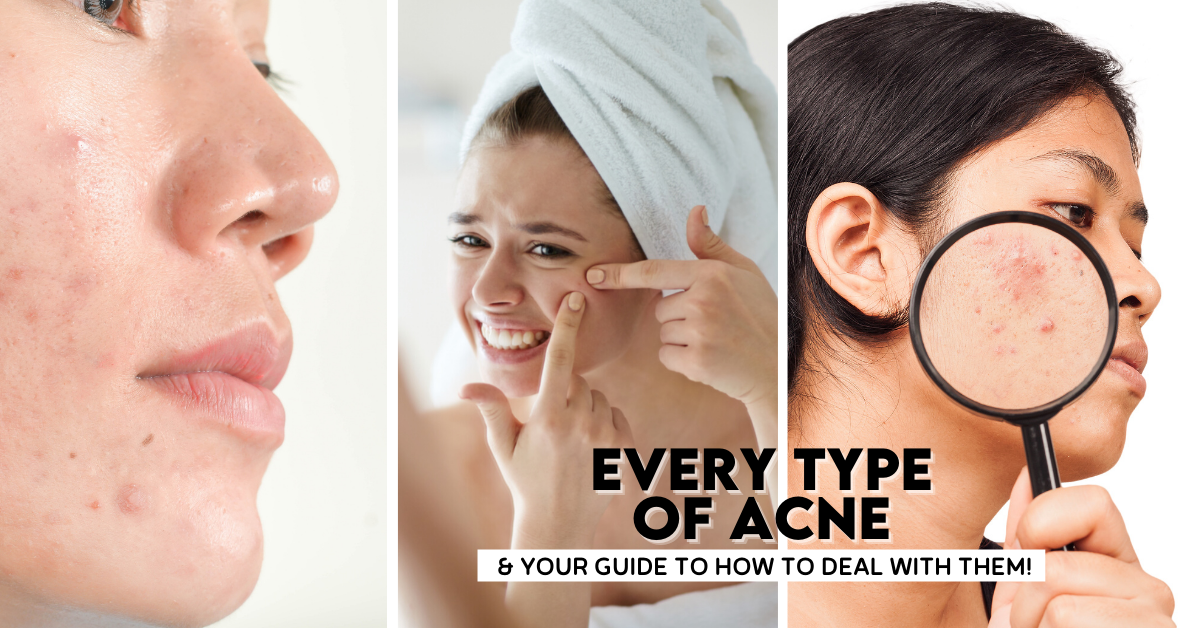
Acne is something many of us go through. From the moment you hit puberty, and for some, it lasts till their 40s! If you are the lucky few who has never had to deal with pimples on your skin, well there are a lot of jealous people out here. Plus, when you have acne, it means that you need to be taking care of your skin much more carefully. Full-on skincare routines with piling products on the shelf is how some of us deal with it. Even if you don’t suffer from acne, it is also important to take care of your skin with a simple skincare routine. But, there are also many types of acne and knowing which type you have can help treat it quicker! Thus, Beauty Insider is here to help you figure out which type of acne you have.
What Causes Acne?
So what causes acne? How come some people have it mild while others have it worse, and some don’t have it at all? But when it comes to acne, there are a few reasons that can cause it. Some of the more general reasons are that it could be due to your genetics, excess androgen hormone, bacteria and too much oil.
Hormonal changes are something that impacts acne the most as you are going through puberty. It causes your hormones to fluctuate and as it rises, more sebum is produced from your skin glands. For ladies, hormonal acne may also occur during menstruation every month.
Genetics are also one of the reasons you might have severe or mild acne. If your parents have dealt with severe acne in their youth, it could be that you will also most likely suffer from the same. Maybe your family history has shown signs of having oilier skin and breakouts. Thus, you are prone to them as well.
Stress is something that is constantly linked to acne. Although it doesn’t directly cause it, it is a trigger. Many young adults and teens suffer from stress acne when it’s finals season. When you are stressed, your body releases adrenaline and cortisol hormones. These fluctuating hormones cause your skin to secrete excess oil and worsen breakouts.
Types of Acne
There are two main types, non-inflammatory and inflammatory acne. These two are the primary categories most acne fall into.
Non-Inflammatory Acne
Non-inflammatory acne are also known as comedones, which can be either closed or open. If you aren’t sure if you have those, just check if you have any blackheads or whiteheads on your skin. Those are non-inflammatory acne, and are different types of acne. Now for the bad news, trying to get comedones out yourself? Bad idea. Since the follicle walls inside whiteheads and blackheads rupture easily, bacteria can seep into surrounding pores. Thus causing inflammation of acne, which is something we don’t want!
Blackheads

Blackheads are also open comedones and typically appear when your pores are clogged. The clogging can be due to dead skin cells or even sebum. As open comedones, it means that although the rest of your pores are clogged up, the top of it is not. That is why you see the colour black, on the surface. Thus, resulting in its name, blackheads.
Whiteheads

Whiteheads, on the other hand, are closed comedones and are also a result of clogged pores. Similar to blackheads, it can be clogged due to both dead skin cells and sebum. The only difference between the two, is the fact that the top of whitehead pores, are closed. Up close, it looks similar to a protruding small bump sitting on your skin. Since whiteheads are closed comedones, they can be harder to treat. Topical retinoids and salicylic acid are your best bet at healing comedones acne.
Inflammatory Acne
Inflammatory acne, on the other hand, are a result of your follicles getting infected by P. Acnes bacteria. Your body responds to this attack by causing breakouts of acne, in four different types. It could be mild, moderate or even severe! Popping pimples are also not a good idea as they can lead to infections, more painful acne, scarring and exacerbating acne.
Pustules

Pustules are acne that forms when your pores surround walls, break down. Creating a bump on your skin, pustules tend to contain puss in them. What’s more, is that they are identifiable by the red skin that surrounds them. The top of pustules usually has white or yellow heads that tempt you into popping them!
Papules
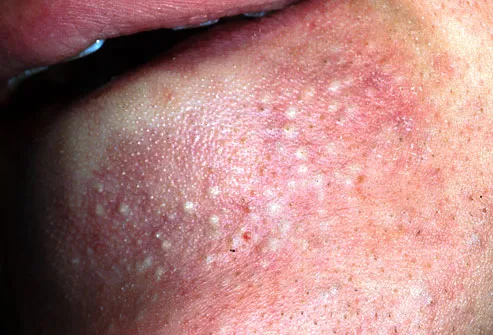
Similar to pustules, papules are the types of acne that happen when the walls that surround your pores, become severely inflamed and break down. This can result in clogged pores that are hard, yet tender to the touch. If you still don’t know what they look like, the skin around pustules are typically the colour pink as well.
Cysts

When there are numerous sebum, bacteria and dead skin cells clogging your pores, cystic acne can occur. They tend to clog deeper and further beneath the surface of your skin. If your pimples are painful to the touch and consists of large white or red bumps, then you’ve identified cysts. Cysts are also the largest form of acne and their formation typically leads to severe infections. Aside from that, cystic acne is also the most likely to scar your skin.
Nodules

When your swollen or clogged pores have undergone more irritation than it can take, it grows larger and becomes nodules. Different from pustules and papules, modules are formed deep, under your skin. Since they are so deep within your skin, you can’t actually treat nodules at home. The only way to help get rid of nodules is by getting a prescription from your dermatologist.
So What Now?

So, you’ve finally identified what type of acne you have. But how severe are they really? Well, blackheads and whiteheads are on the milder side while cysts and nodules are on the more severe end. Mild acne can be cleared with a little help from spot treatments and topical medications. If you’re dealing with severe acne, then your only solution is going to a dermatologist. DO NOT try to pop severe acne as they can very easily, lead to scars. The middle ground, moderate acne are pustules and papules. Depending on your skin type, they may or may not clear up if you use over the counter medications. If they persist or are widespread, a trip to the dermatologist might help.
It’s also good to note that you have to be quite patient with acne treatments. They certainly won’t disappear overnight! For some, you may not even witness widespread improvements for months. If you are using a ton of products, be cautious of allergic reactions, irritations and dryness. If you still can’t identify the bumps on your skin, it may be because they aren’t acne at all! They might just be skin conditions such as rosacea, milia, sebaceous filaments, etc. The only way to find out, however, is to visit a dermatologist and get a full diagnosis of how to treat your skin. Sometimes, getting help from a professional is the only way you’re able to clear up your acne!
Product Recommendations
Now, here are a few products that might just be able to help!
1. Some By Mi Bye Bye Blackhead 30 Days Miracle Green Tea Tox Bubble Cleanser

Some By Mi’s Bye Bye Blackhead 30 Days Miracle Green Tea Tox Bubble Cleanser contains BHAs and green tea that offer your skin anti-oxidising benefits. It is great for exfoliating whiteheads and blackheads, leaving your skin feeling moisturised and glowing! In just 5 minutes, you can feel your skin become tighter!
Price: RM57.24
Where to buy: Shopee
2. THE INKEY LIST C-50 Blemish Night Treatment

THE INKEY LIST C-50 Blemish Night Treatment has the benefit to help fight off blemishes. Aside from that, it also helps reduce the production of excess oil, redness and prevent future breakouts!
Price: RM77.00
Where to buy: Threebs
3. COMMONLABS Vitamin E Calming Light Cream

The COMMONLABS Vitamin E Calming Light Cream has abilities to help moisturise and calm your skin. With 77% tea tree lead extract present within its formula, it helps control sebum with a sterilising effect. This provides an effect that is 20 times stronger than alcohol. Its formula also contains Patented Gesolza™ that helps alleviate inflammation. Ceramides, cholesterol and fatty acids, on the other hand, also help strengthen your skin barrier.
Price: RM77.00
Where to buy: Ksisters
If you found this useful, make sure to follow us on Instagram and Facebook for more of the latest beauty news and trends! Check out our Insider Mall to Shop Beauty. Get Rewarded!


